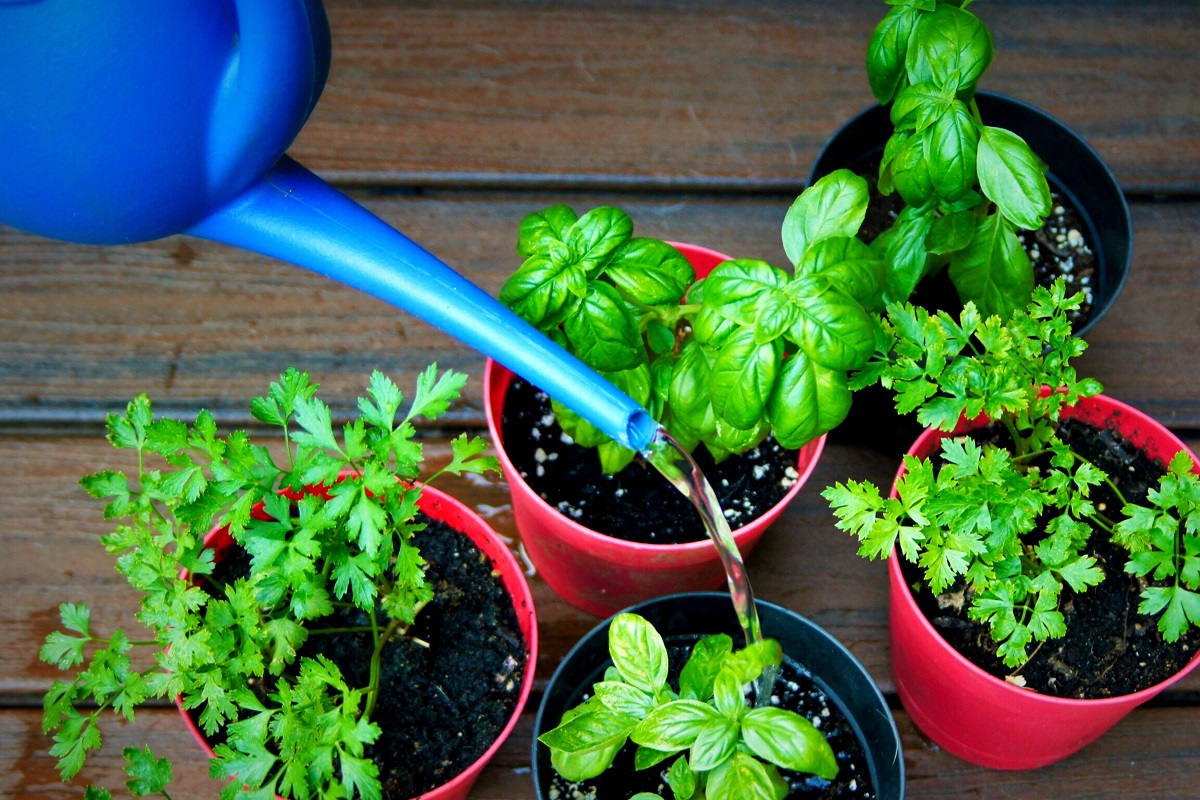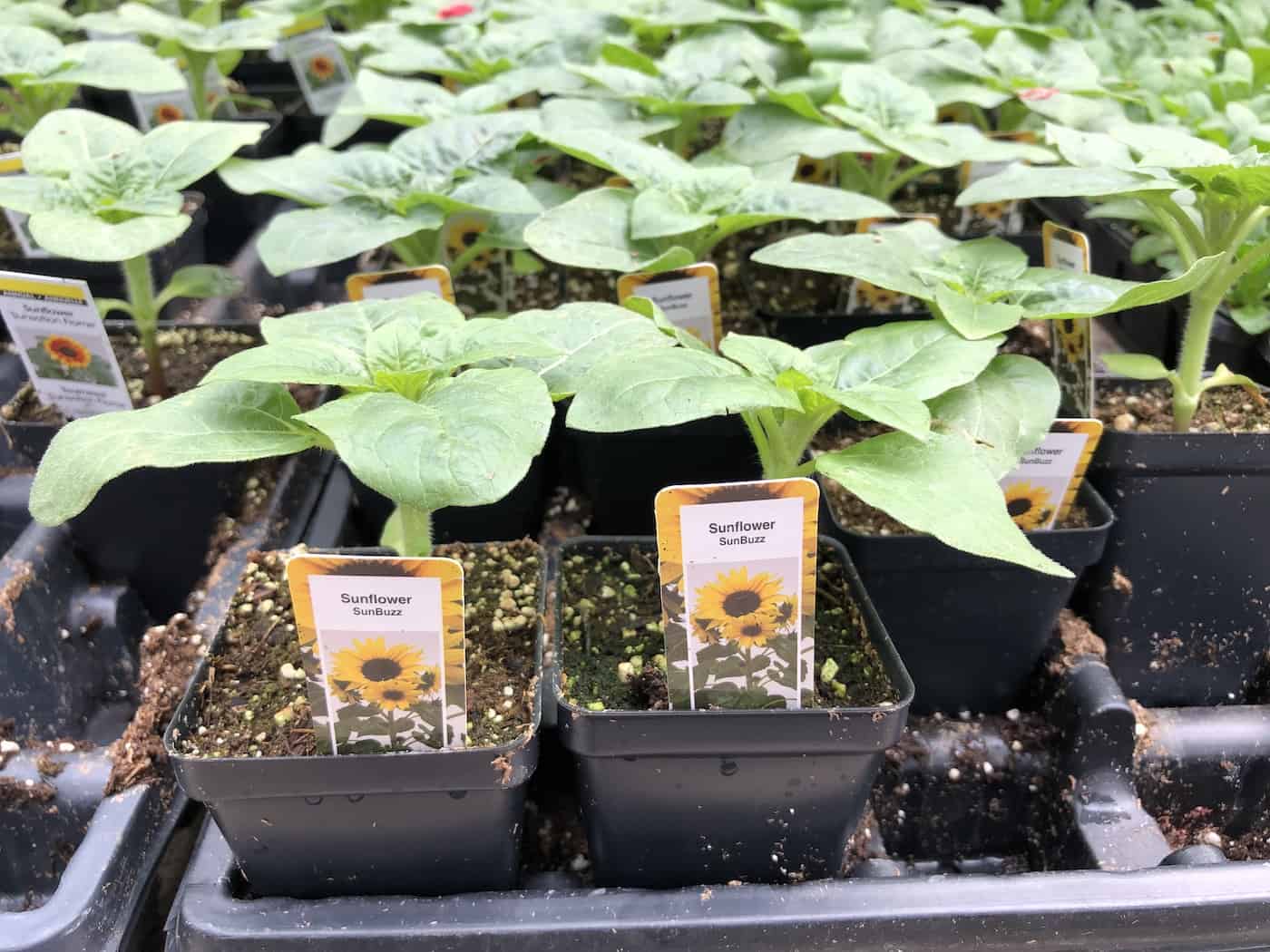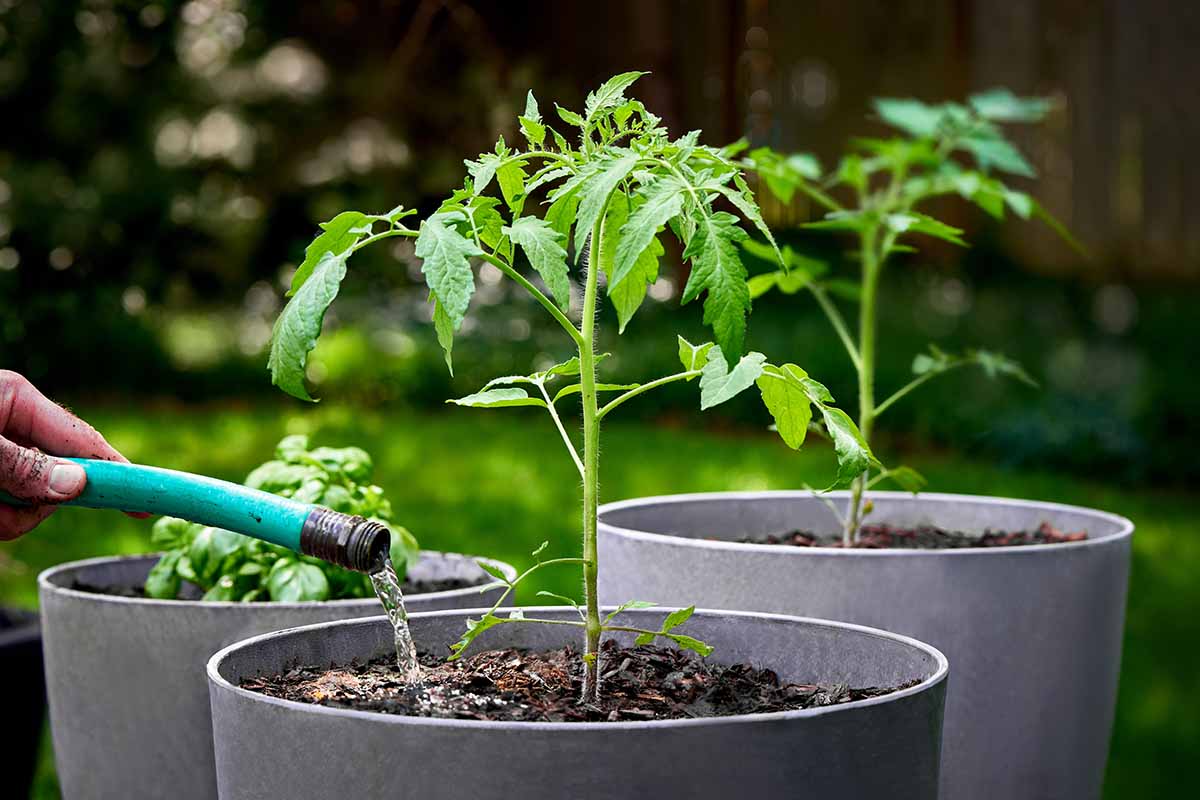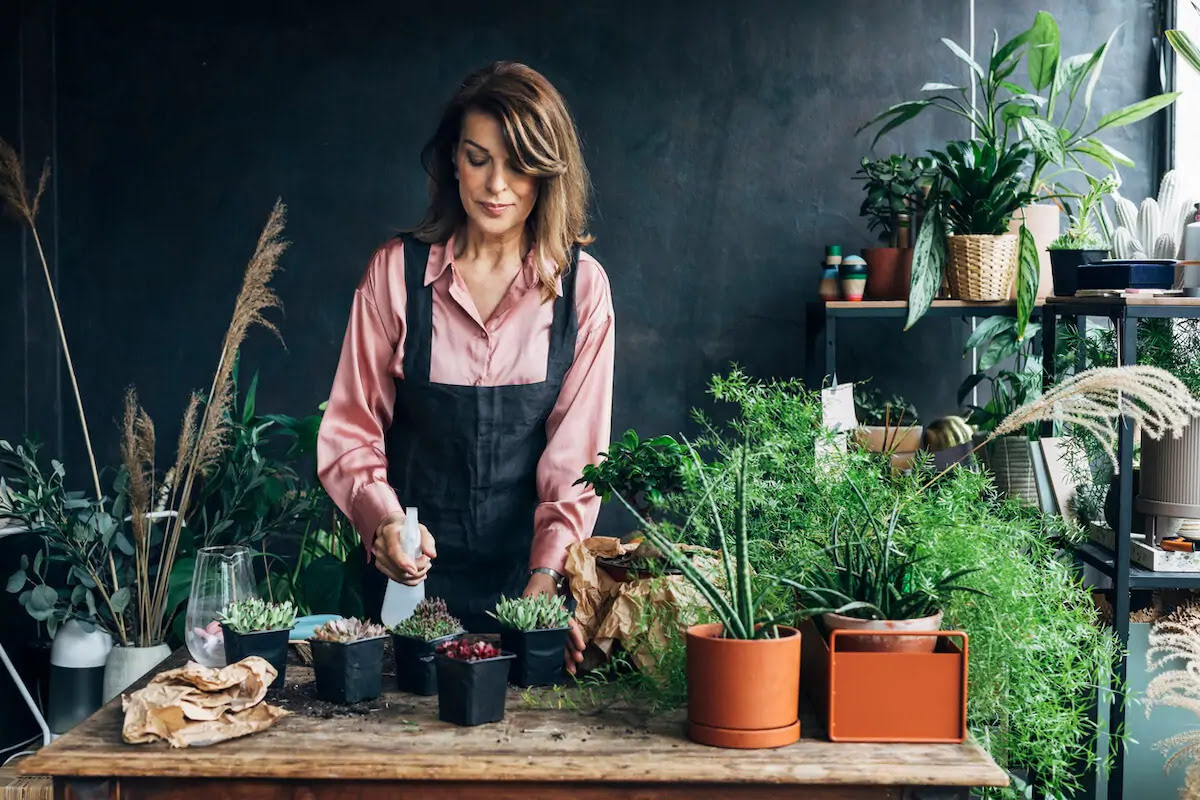Home>Gardening Tips and Tricks>Maximizing Yield>How Often Do You Water Herbs Indoors
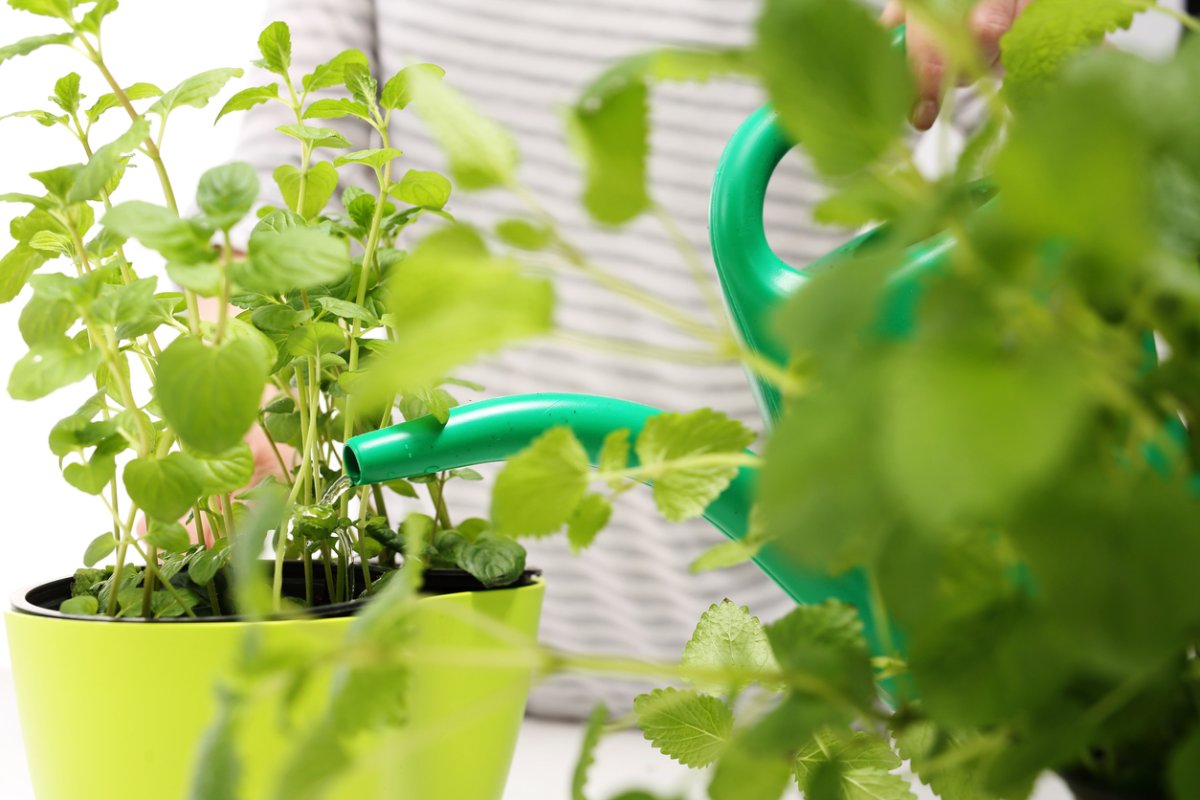

Maximizing Yield
How Often Do You Water Herbs Indoors
Modified: February 9, 2024
Discover the best watering schedule for indoor herbs and learn how to maximize their yield. Get expert tips on maximizing yield and maintaining healthy herb plants indoors.
(Many of the links in this article redirect to a specific reviewed product. Your purchase of these products through affiliate links helps to generate commission for Chicagolandgardening.com, at no extra cost. Learn more)
Table of Contents
Introduction
Welcome to the world of indoor herb gardening! Growing herbs indoors is a wonderful way to bring fresh flavors and fragrances into your home year-round. Whether you have a spacious kitchen or a small apartment, you can still enjoy the pleasure of nurturing and harvesting your own herbs.
When it comes to successful indoor herb gardening, one crucial factor to consider is proper watering. Just like any other plant, herbs require a sufficient amount of water to thrive. However, finding the right balance can be challenging, as factors such as the type of herb, potting soil, and environmental conditions all play a role in determining when and how often you should water.
In this article, we will explore the various factors to consider when watering herbs indoors, as well as essential guidelines to help you maximize their growth and yield. We’ll also discuss signs of thirst to look out for and common mistakes to avoid. Finally, we’ll explore different watering tools and techniques, as well as natural remedies to keep your herbs healthy and vibrant.
Whether you are a beginner or an experienced indoor gardener, this article will provide you with the insights and knowledge you need to become a master at watering your herbs.
Factors to Consider
When it comes to watering herbs indoors, several factors come into play. Understanding these factors will help you determine the watering needs of your herbs more effectively:
- Type of Herb: Different herbs have varying water requirements. For example, herbs like basil and mint prefer more moisture, while herbs like rosemary and thyme prefer drier conditions. Consider the specific needs of each herb you are growing and adjust your watering routine accordingly.
- Potting Soil: The type of potting soil you use can affect moisture retention. Some soils retain moisture better than others, so be sure to choose a high-quality, well-draining soil mix specifically formulated for herbs.
- Pot Size and Drainage: The size of the pot and its drainage capabilities are crucial factors. Ensure that your pots have drainage holes to prevent waterlogging and root rot. Smaller pots dry out more quickly, so they may require more frequent watering.
- Environmental Conditions: The temperature and humidity levels in your indoor environment also impact how often herbs need watering. Dry air and higher temperatures can cause soil to dry out faster, while humid conditions may require you to adjust your watering frequency.
- Growth Stage: The growth stage of your herbs will determine their water needs. Young seedlings require more frequent watering to establish their roots, while mature plants may need less frequent watering.
- Seasonal Changes: During different seasons, the lighting conditions and temperature in your home may vary. Be mindful of these changes and adjust your watering routine accordingly.
By considering these factors, you can develop a watering routine that meets the specific needs of your indoor herb garden. Remember to monitor your herbs closely and make adjustments as necessary to maintain optimal moisture levels for healthy and thriving herbs.
Types of Herbs
Herbs come in a variety of flavors, scents, and growth habits. Understanding the specific needs of each type of herb will help you tailor your watering approach. Here are some common types of herbs and their watering preferences:
- Basil: Basil is an herb that enjoys consistently moist soil. It is best to water basil when the top inch of soil feels dry to the touch. Be careful not to overwater, as it can lead to root rot.
- Mint: Mint prefers moist soil, similar to basil. Water the plant when the top layer of soil feels dry. Keep in mind that mint can quickly spread and take over if not contained, so consider planting it in a separate container.
- Rosemary: Rosemary is a drought-tolerant herb that prefers drier conditions. Allow the top 1-2 inches of soil to dry out between waterings. Overwatering rosemary can lead to root rot.
- Oregano: Oregano thrives in well-draining soil. Water the plant when the soil feels dry to the touch. It is important not to let the soil completely dry out, as oregano prefers slightly moist conditions.
- Parsley: Parsley prefers consistently moist soil. Water the plant when the top inch of soil is dry, but avoid overwatering to prevent root rot. Mulching around the base of the plant can help retain soil moisture.
- Thyme: Thyme is a drought-tolerant herb that prefers drier conditions. Water the plant when the top 1-2 inches of soil are dry. Avoid overwatering, as it can cause root rot.
These are just a few examples of popular herbs, but there are many more to explore. Research the specific watering needs of the herbs you are growing to ensure their well-being. Remember, it’s always better to underwater than overwater when it comes to herbs.
Signs of Thirst
Just like humans, plants communicate their needs in their own unique ways. It’s important to be able to recognize the signs that your herbs may be thirsty and in need of water. Here are some common signs of thirst to look out for:
- Drooping Leaves: One of the most noticeable signs of thirst is drooping or wilted leaves. When herbs lack water, their leaves may appear limp and lose their rigidity. However, it’s important to note that overwatering can also cause drooping leaves, so assess the soil moisture level before watering.
- Dry Soil: Check the moisture level of the soil by sticking your finger about an inch into the soil. If it feels dry, it’s a sign that your herbs are thirsty and in need of water. However, some herbs, like rosemary, prefer slightly dry soil, so be sure to consider the specific needs of each herb.
- Yellowing Leaves: Yellowing leaves can indicate both underwatering and overwatering. However, if the leaves are turning yellow and brittle, it could be a sign of underwatering. In this case, give your herbs a good drink of water.
- Slow Growth or Stunted Appearance: If your herbs are not growing as vigorously as usual or appear stunted in their growth, it could be a sign of insufficient water. Lack of water can inhibit nutrient uptake and overall plant development.
- Lighter-colored Leaves: When herbs lack water, their leaves may become paler or lighter in color. This can be particularly noticeable in herbs with dark green foliage.
Keep in mind that these signs may vary depending on the herb and other factors mentioned earlier. By attentively observing your herbs and responding to their signs of thirst, you can ensure they receive the adequate water they need to thrive.
Watering Guidelines
Watering herbs properly is essential for their overall health and productivity. Follow these guidelines to ensure you are watering your herbs effectively:
- Water Deeply: When you water your herbs, make sure to provide a thorough soaking. This ensures that the water reaches the roots, promoting healthy growth. Avoid shallow watering, as it encourages shallow root development.
- Allow Proper Drainage: As mentioned earlier, it is crucial to have good drainage in your pots. Ensure that your herb containers have drainage holes to allow excess water to escape. This prevents water from pooling at the bottom and causing root rot.
- Observe the Soil: Check the moisture level of the soil regularly by sticking your finger about an inch into the soil. If it feels dry, it’s time to water. If it feels moist, hold off on watering to avoid overwatering.
- Watering Frequency: The frequency of watering will depend on various factors such as the herb type, pot size, environmental conditions, and growth stage. As a general guideline, water your herbs when the top inch of soil feels dry. Do not stick to a strict schedule; instead, let the needs of your herbs dictate your watering routine.
- Water at the Base: When watering your herbs, aim to water at the base of the plant rather than directly on the leaves. This helps minimize the risk of fungal diseases and ensures that the water reaches the roots where it’s needed the most.
- Avoid Overwatering: Overwatering is one of the most common mistakes made by indoor gardeners. It is important to strike a balance and not let the soil become waterlogged. Remember, it’s better to underwater than overwater, as most herbs prefer slightly drier conditions.
- Time of Day: Watering your herbs in the morning is generally recommended. This allows the plants to dry out during the day, reducing the risk of fungal issues. Avoid watering in the evening, as the prolonged moisture can promote disease development.
- Use Room Temperature Water: Avoid using extremely cold or hot water when watering your herbs. Opt for room temperature water, as extreme temperatures can shock the roots and hinder growth.
By following these watering guidelines, you’ll be able to provide the right amount of water to your herbs, ensuring they stay healthy and vibrant as they continue to grow and yield delicious flavors and aromas.
Common Mistakes to Avoid
While watering your herbs is crucial for their well-being, there are some common mistakes that you should avoid to ensure optimal growth and health. Here are a few pitfalls to watch out for:
- Overwatering: One of the most common mistakes is overwatering. Remember that herbs prefer slightly drier conditions, so it’s important not to let the soil become waterlogged. The key is to find the right balance and water only when needed.
- Underwatering: On the other hand, not providing enough water can also negatively impact your herbs. Neglecting to water on time can lead to wilting, stunted growth, and even death. Be attentive to the signs of thirst and water your herbs accordingly.
- Watering from Above: Avoid watering your herbs from above, as this can lead to wet foliage and increase the risk of fungal diseases. Instead, water at the base of the plant and allow the water to reach the roots where it’s needed.
- Ignoring Drainage: Poor drainage is detrimental to herb growth. Make sure your pots have adequate drainage holes to prevent water accumulation, which can cause root rot. Additionally, consider using a saucer to collect excess water and empty it after watering.
- Using Hard Water: Herbs are sensitive to the quality of water they receive. Avoid using hard water, which contains high levels of minerals that can accumulate in the soil and hinder nutrient uptake. If you have no access to soft water, let tap water sit out overnight to allow chlorine to evaporate before using it to water your herbs.
- Overcrowding: Planting too many herbs in one pot can lead to competition for water and nutrients. Provide adequate space for each herb to allow for optimal growth and prevent overcrowding-related issues.
- Improper Light Exposure: Insufficient or excessive light exposure can affect herb growth and watering needs. Make sure your herbs are placed in an area that receives the recommended amount of light for their specific requirements.
Avoiding these common mistakes will help ensure the health and productivity of your indoor herb garden. Remember to closely monitor your herbs, adjust watering habits as needed, and provide them with the right conditions for optimal growth.
Watering Tools and Techniques
Having the right tools and employing proper techniques for watering your herbs can make a significant difference in their growth and overall health. Here are some essential watering tools and techniques to consider:
- Watering Can: A watering can with a narrow spout is a must-have tool for indoor herb gardening. It allows you to control the water flow and target the base of the plants, ensuring efficient watering with minimal waste.
- Spray Bottle: In addition to a watering can, a spray bottle can come in handy, especially for herbs that prefer slightly more humidity. Use a fine mist setting to spray the leaves of your herbs, providing them with a light misting of water. This is particularly beneficial in drier environments.
- Bottom Watering: Bottom watering is a technique where you place your herb pots in a tray or saucer filled with water. The plants absorb water from the bottom through the drainage holes, promoting healthy root growth. This method is particularly useful for herbs sensitive to wet foliage, such as rosemary.
- Self-Watering Systems: Consider using self-watering systems, such as wicking or capillary mat systems. These systems allow the plants to take up water as needed from a reservoir, preventing overwatering and ensuring consistent moisture levels.
- Moisture Meters: Moisture meters are handy tools that help you determine the soil moisture level accurately. They have probes that you can insert into the soil, providing instant readings. A moisture meter can be especially useful if you’re unsure whether your herbs need water or not.
- Mulching: Applying a layer of organic mulch, such as compost or straw, around the base of your herbs can help retain soil moisture. Mulching also helps regulate soil temperature and prevents weed growth, improving overall water efficiency.
- Grouping Herbs: Another technique to consider is grouping herbs with similar watering needs together. This allows you to better manage their water requirements, as you can water them as a group rather than individually.
Experiment with different tools and techniques to find what works best for your indoor herb garden. Remember to always observe your herbs closely and adjust your watering strategy as needed to promote healthy growth.
Natural Remedies
In addition to proper watering techniques, there are natural remedies you can employ to support the health and well-being of your indoor herbs. These remedies can help prevent common issues and promote optimal growth without relying on chemical-based solutions. Here are a few natural remedies to consider:
- Compost Tea: Compost tea is a nutrient-rich liquid made by steeping compost in water. It serves as a natural fertilizer that provides essential nutrients to your herbs. Use compost tea to water your herbs occasionally to boost their overall health and productivity.
- Aloe Vera Solution: Aloe vera is known for its healing properties and can be used as a natural plant tonic. Mix a teaspoon of aloe vera gel or juice with a gallon of water and use it to water your herbs. This can help prevent diseases and support plant growth.
- Neem Oil: Neem oil is derived from the seeds of the neem tree and is an effective natural remedy for controlling pests. Dilute neem oil according to package instructions and spray it on your herbs to deter common pests, such as aphids or spider mites.
- Chamomile Tea: Chamomile tea can be used as a natural fungicide to combat fungal infections. Brew a strong chamomile tea, let it cool, and use it as a foliar spray on your herbs to help prevent and treat fungal diseases.
- Cinnamon: Cinnamon has antifungal and antibacterial properties and can help prevent damping-off disease in seedlings. Simply sprinkle a little cinnamon powder on the soil surface to deter fungus growth and protect your young herbs.
- Epsom Salt: Epsom salt is a great source of magnesium, which is beneficial for herb growth. Dissolve a tablespoon of Epsom salt in a gallon of water and use it as a foliar spray or soil drench to provide your herbs with a magnesium boost.
- Herbal Infusions: Some herbs, such as chamomile, nettle, or comfrey, can be made into herbal infusions and used as a natural liquid fertilizer. Simply steep the herbs in water for a few days, strain the liquid, and dilute it before using it to water your herbs.
These natural remedies can be effective in maintaining the health and vitality of your indoor herbs. However, it’s important to remember that prevention is key. Provide your herbs with proper care, including adequate watering, sunlight, and a well-balanced environment, to minimize the need for remedies.
Conclusion
Cultivating an indoor herb garden is a rewarding and enjoyable experience. By understanding the factors that influence watering, recognizing the signs of thirst, and following proper guidelines, you can ensure the health, growth, and yield of your indoor herbs.
Consider the specific watering needs of each herb, taking into account factors such as potting soil, pot size, environmental conditions, and growth stage. Pay attention to signs of thirst, like drooping leaves, dry soil, and slower growth, and adjust your watering routine accordingly.
Avoid common mistakes, including overwatering, underwatering, and watering from above. Use appropriate watering tools and techniques, such as watering cans, spray bottles, and bottom watering, to provide your herbs with the right amount of water directly to the roots.
Explore natural remedies like compost tea, aloe vera solution, and neem oil to enhance the health and resilience of your herbs. Additionally, keep in mind that prevention is key, so providing proper care, lighting, and a well-balanced environment is essential for the success of your indoor herb garden.
By following these guidelines, you can maximize the yield and enjoy the fresh flavors and fragrances of your culinary herbs throughout the year. So, get your watering can ready, tend to your indoor herb garden with care, and savor the joy of growing your own herbs indoors!
